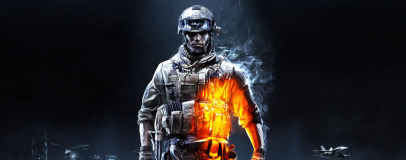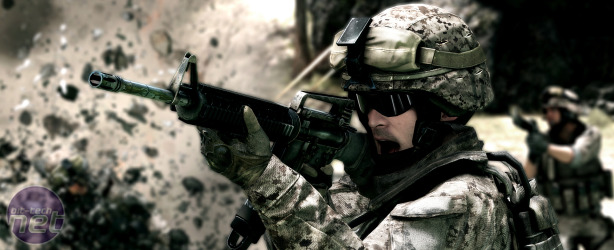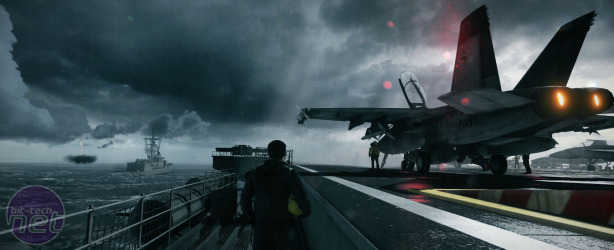
Conclusion
We can take plenty from our testing of Battlefield 3, and some of it’s really quite surprising. Perhaps most notable is the game’s lack of reliance on the CPU or memory; we found performance at the Ultra preset was the same when using a 3.2GHz quad-core CPU with 6GB of DDR3 memory as when using a 2GHz dual core chip with 2GB of DDR3 RAM, at least in our single-player benchmark.Also surprising was the efficiency of DICE’s new application of HBAO. In the Frostbite engine of Battlefield Bad Company 2, HBAO was a big fat performance hog and offered minimal lighting improvements. In Battlefield 3, HBAO not only has a much more noticeable effect on lighting, but it also comes at a modest performance hit; it’s well worth leaving it enabled.
Click to enlarge - Really, this game looks awesome
Perhaps most pertinent, though, is the difference between the Ultra preset and the same preset with AA disabled or lowered. Adding 4x AA, as the Ultra preset does, makes a huge dent in performance, particularly for cards based on AMD chips. Dropping this to 2x, or disabling it completely, sees performance improve substantially, to the point where there’s minimal difference between the High detail preset and the Ultra detail preset when AA is disabled, at least on the DirectX 11 graphics cards we’ve tested here.
We’ve also been able to put some performance rumours to rest. As the identical results of the HD 6950 2GB and 1GB show, simply throwing more graphics memory at BF3 doesn't improve performance. Instead, it gobbles up extra GPU resources and higher clock speeds, which would explain the reports of BF3 pushing graphics cards so hard. It certainly makes overclocking your GPU worth considering, though, especially as all the results in this article are based on the cards running at their stock clock speeds. When you consider that a GTX 560 Ti 1GB will happily accept an 80MHz (10 per cent) core frequency overclock, it’s well worth seeing what you can squeeze out of it.
In the end, DICE has done a great job of creating a game engine that can scale from the lowliest of GPUS, to the very peak of graphical prowess, and look great at almost any combination of settings. It’s certainly one of the most GPU-limited games we’ve ever come across, and we look forward to benchmarking GPUs with it for a long while to come.

MSI MPG Velox 100R Chassis Review
October 14 2021 | 15:04










Want to comment? Please log in.